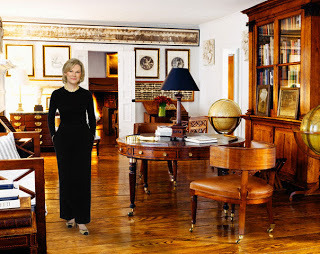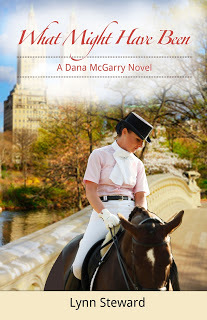Mayra Calvani's Blog, page 7
September 27, 2016
Interview with Sam Newsome, author of JOE PEAS
 He received a BA in American history from UNC-Chapel Hill in 1971. He received his medical degree from the Bowman Gray School of Medicine (now Wake Forest University School of Medicine) in 1975. He completed his residency and certification in family medicine in 1978. In 1992 he received his certification in Geriatric Medicine.
He received a BA in American history from UNC-Chapel Hill in 1971. He received his medical degree from the Bowman Gray School of Medicine (now Wake Forest University School of Medicine) in 1975. He completed his residency and certification in family medicine in 1978. In 1992 he received his certification in Geriatric Medicine.In 1978 he returned to King with his wife, Betty, to begin his practice in family medicine. As part of his practice, he staffed the community hospital and the county health department. He also began a county jail health program and continued to care for patients in local long-term care facilities.
He has two sons. Carlton shares a love of writing and lives in Raleigh. Justin lives in Winston-Salem and is an engineer at B/E aerospace.
Sam continues to live with Betty, his wife for forty-five years, in King, North Carolina. He continues to be fully involved in his medical practice.
His first novel, Jackie, was published in October 2013. It chronicles the life of an unfortunate child with autism spectrum who was bullied and abused in school till he was ruled uneducable. As a young adult he is discovered to have a near supernatural ability that propels him to a historic destiny.
His recent effort, Joe Peas, grew out of his experiences in medical practice and explores the increasing demands for conformity in our modern world. He does this in the setting of a long-term care facility that gives him the opportunity to both entertain and educate.
Q: Congratulations on the release of your latest book, Joe Peas. To begin with, can you give us a brief summary of what the story is about and what compelled you to write it?
 A: James King is a family doctor who is bound by a life that is too full of structure and regulation. His routine is interrupted by an itinerant Italian house painter, Joe Peas. Joe’s free spirited life is a sharp contrast to Doc’s. They bond, and eventually, after an accident, Joe becomes a rehab patient in Doc’s long-term care facility. As Doc is drawn to his patient’s vagabond lifestyle, Joe begins to miss the family and human connections he never had.
A: James King is a family doctor who is bound by a life that is too full of structure and regulation. His routine is interrupted by an itinerant Italian house painter, Joe Peas. Joe’s free spirited life is a sharp contrast to Doc’s. They bond, and eventually, after an accident, Joe becomes a rehab patient in Doc’s long-term care facility. As Doc is drawn to his patient’s vagabond lifestyle, Joe begins to miss the family and human connections he never had.The long-term care facility is populated by residents with problems including traumatic brain injury, stroke, colon cancer, and advanced age. Joe’s infectious personality gets him involved in all their struggles and issues.
As Joe’s secret life begins to unfold, he creates a plot to help Doc with his own personal struggles. The Italian’s scheme is both unique and surprising.
Q: What do you think makes a good novel? Could you narrow it down to the three most important elements? Is it even possible to narrow it down?
A: Let me counter by my own question. Why write at all?
I write to send a message. In JoePeas, the main message is that we are becoming enslaved by conformity. A continuing theme is a celebration of the individual.
So, a novel sends a message. It may be subliminal, or it may have the power of a sledgehammer, but it should say something.
Second, it should entice the reader to turn the page. Humor, excitement and greed are all factors that contribute to wooing the reader to continue. Sex is also a popular legitimate means of holding attention, but I have no talent for writing erotica, so I largely leave that out.
Third, secondary stories (plots) that keep the reader guessing, “Just where is he going with that?”
The fun is in the trip with the expectation of arriving at a destination.
What else is there? So much that my puny talent can’t begin to fathom!
Q: How did you go about plotting your story? Or did you discover it as you worked on the book?
A: This story was character driven. It began with the four residents of a skilled nursing facility plus the Joe’s story. Each character’s story was initially written separately. Then they were woven together to provide interaction and, finally, the appropriate resolutions.
Q: Tell us something interesting about your protagonist and how you developed him or her. Did you do any character interviews or sketches prior to the actual writing?
A: My main character, Joe Peas, is based on a patient I treated for twenty years. The model for Joe was an adolescent during World War II and hidden by the resistance in Eastern Europe. After the war, like Joe Peas, he was given a choice. He could live in London, Toronto, or New York. He picked a very American name and became a New Yorker. That true story was too good not to incorporate in a novel at some point.
Q: In the same light, how did you create your antagonist or villain? What steps did you take to make him or her realistic?
A: There are two main antagonists in my story, as there are several simultaneous plots. One is so obvious, that I won’t expound on that here. The second is the extreme opposite of Joe Peas. He is a copy of every irritating front-row school student who continually asked questions to get noticed and raised the ire of the rest of the class. If Joe is the ultimate non-conformist, Professor Watley is a paragon of conformity.
Q: How did you keep your narrative exciting throughout the novel? Could you offer some practical, specific tips?
A: Having several story lines helps. I want to address serious topics in some detail, but I want to make a “good read” as well. If I think I’m getting too serious, I let one of the other characters carry his story for a while. I’ll occasionally throw in a light moment or have him tell a joke. That allows the deeper thought to percolate a bit before resuming the deeper subject. Shorter chapters are placed at the areas where attention may lag. That gives the reader a chance to turn over and begin to tan the other side before resuming the book.
Q: Setting is also quite important and in many cases it becomes like a character itself. What tools of the trade did you use in your writing to bring the setting to life?
A: Correct, the setting is an important part of my story. I describe the long-term care facility and the struggles of running a facility. Statistics show that fifty percent of us will spend time in long-term care. A sympathetic narrative should peel away some of the stigma associated with nursing homes.
Q: Did you know the theme(s) of your novel from the start or is this something you discovered after completing the first draft? Is this theme(s) recurrent in your other work?
A: The continued interaction of Joe and Doc was always the foundation of the story. The character studies were initially meant to be short stories. But I eventually felt they belonged as part of a single work and putting them into Joe’s story invites an interaction with a number of different people that highlights his Italian free spirited life-style.
Q: Where does craft end and art begin? Do you think editing can destroy the initial creative thrust of an author?
A: I think that art comes first, then craft. As I reflect on my own story, I jot or type the story as quickly as possible (I guess that’s art). Then I go back and rewrite as necessary (that’s craft).
Q: What three things, in your opinion, make a successful novelist?
A: First, is there something to be said? Otherwise, what’s the point?
Second, A novelist needs a grasp of what it takes to be a good storyteller. Can he successfully tell a joke?
Third, does he have the patience to methodically piece together? Can he see find imperfections and be honest enough to discard and rewrite?
Q: A famous writer once wrote that being an author is like having to do homework for the rest of your life. What do you think about that?
A: I don’t see that. I relate writing to an illness, an obsession—an obsession that is mollified by “writing it down.”
Q: Are there any resources, books, workshops or sites about craft that you’ve found helpful during your writing career?
A: Those would be great, and I fully intend to avail myself of those in the future. Like many authors, I am fully employed. I am, In fact over employed, so workshops will have to wait.
Q: Is there anything else you’d like to share with my readers about the craft of writing?
A: I’m not sure that there is a single formula for a great novel. There are as many different ways to construct a good story as there are novelists. Please write. Make good stories and enjoy the process.
September 26, 2016
On the Spotlight: The Gail Force, by Robert Lane
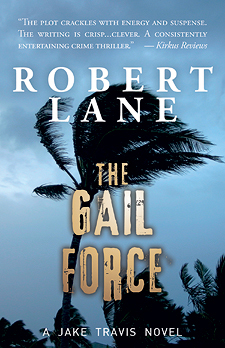
Mason Alley Publishing – Release date: September 20th 2106
Available in trade paper (ISBN: 978-0692670446, $14.95) and eBook ($4.99) editions
"a consistently entertaining crime thriller…The plot crackles with energy and suspense. The writing is crisp...clever.” –Kirkus
"Charm and humor permeate the pages of the surprising thriller. There's little chance that anyone will turn the last page before developing a craving for the next installment." –ForeWord Reviews
Award-winning novelist Robert Lane, who has drawn comparisons to John D. MacDonald, has created one of the most compelling characters in mystery today. PI Jake Travis is tough, smart, wise and wisecracking. He’s hailed as “a winning hero”—and this time, Jake has an elaborate knot to untangle.
While trying to expose a corrupt Miami art dealer, Jake goes undercover for the FBI. The gallery's owner, Phillip Agatha, is more enchanted with murder than he is with art. Aboard Agatha's luxury yacht, the Gail Force, Jake is taken with Agatha's hospitality—and with his alluring assistant, Christina, a woman who harbors her own secrets. Unknowingly, Jake plays into Agatha's hands and initiates actions that could cause an innocent girl to die.
As Jake struggles to save the girl, unearth a rogue FBI agent, and bring Agatha to justice, his greatest challenge is to stay loyal to his girlfriend Kathleen—and to withstand the Gail Force. As Jake himself observes, “After all, everything’s a game. Sometimes you win. Sometimes you lose. Sometimes you don’t know what game you’re playing.” This game is on…
The Gail Force is crime fiction writing at its finest. With a storyline that races from the opening page, characters that stay with readers long after the final page is turned, and the wit, wisdom, lust for life, and cynicism of Jake Travis, The Gail Force will leave readers breathless.

Robert Lane resides on Florida’s west coast. His debut Jake Travis novel, The Second Letter, was received with critical acclaim and was awarded the Gold Medal in the Independent Book Publishers Association (IBPA) 2015 Benjamin Franklin Award for Best New Voice: Fiction. His other novels in the stand alone series are Cooler Than Blood, and The Cardinal’s Sin.
September 5, 2016
Spotlight: ‘Death Steals A Holy Book’ by Rosemary and Larry Mild
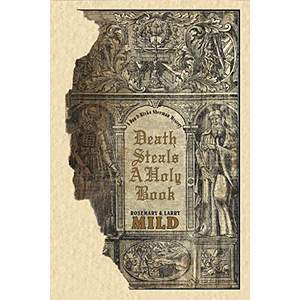
Steals A Holy Book
By Rosemary and Larry Mild
Release: September 2016
Magic Island Literary Works
Available in trade paper (ISBN 978-0-9905472-0-4, 243 pages, $14.95)and eBook editions
Husband-and-wife mystery novelists Rosemary and Larry Mild have created a tightly woven, cleverly plotted and supremely suspenseful tale in Death Steals A Holy Book. Resplendent with action, intrigue, wit, and a to-die-for cast of characters, Death Steals A Holy Book is bound to delight.
Reluctant sleuths Dan and Rivka Sherman yearn for a tranquil life as the owners of The Olde Victorian Bookstore in Annapolis, Maryland. But when the Shermans acquire a rare volume, they find themselves embroiled in a firestorm of deceit, thievery, and violence.
Israel Finestein, renowned restorer of old books in Baltimore, has just finished his work on the Menorat ha-maor, “The Candlestick of Light.”His life is brutally snuffed out and the book disappears. What makes this rare text so valuable that someone is compelled to kill for it? Two Baltimore detectives find a puzzling number of suspects. Is it the controversial woman whom Israel plans to marry? The rare book agent who overextended himself in the stock market? Israel’s busybody cousins who resent his changed lifestyle? Or the wayward lad who thinks a gun is the way to big bucks?
This case could be one for the books…
::::::::::::::::::::::::::::::::::::
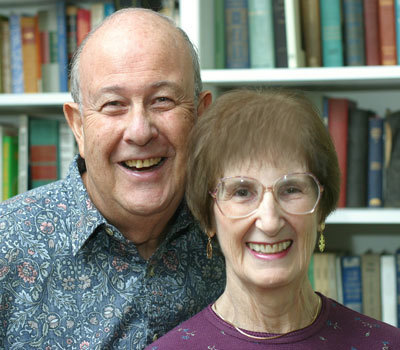
Rosemary and Larry have published award-winning novels, short stories, and essays. They coauthored the popular Paco and Molly Mystery Series and Cry Ohana, a thriller set in Hawaii, as well as stories in anthologies.Members of Mystery Writers of America, Sisters in Crime, and Hawaii Fiction Writers, they now call Honolulu home.
August 29, 2016
Talking Craft with Anna del Mar, Author of THE STRANGER (sexy romantic suspense)



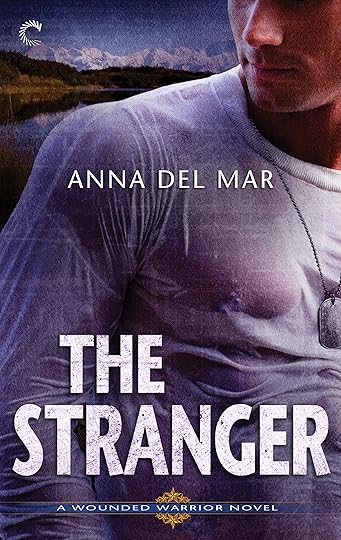 Anna del Mar writes hot, smart romances that soothe the soul, challenge the mind, and satisfy the heart. Her stories focus on strong heroines struggling to find their place in the world and the brave, sexy, kickass, military heroes who defy their limits to protect the women they love. She’s the author of
The Asset
,
At the Brink
and her newest romantic suspense,
The Stranger
. Anna enjoys traveling, hiking, skiing, and the sea. Writing is her addiction, her drug of choice, and what she wants to do all the time. The extraordinary men and women she met during her years as a Navy wife inspire the fabulous heroes and heroines at the center of her stories. When she stays put—which doesn’t happen very often—she lives in Florida with her indulgent husband and two very opinionated cats.
Anna del Mar writes hot, smart romances that soothe the soul, challenge the mind, and satisfy the heart. Her stories focus on strong heroines struggling to find their place in the world and the brave, sexy, kickass, military heroes who defy their limits to protect the women they love. She’s the author of
The Asset
,
At the Brink
and her newest romantic suspense,
The Stranger
. Anna enjoys traveling, hiking, skiing, and the sea. Writing is her addiction, her drug of choice, and what she wants to do all the time. The extraordinary men and women she met during her years as a Navy wife inspire the fabulous heroes and heroines at the center of her stories. When she stays put—which doesn’t happen very often—she lives in Florida with her indulgent husband and two very opinionated cats.Q: Congratulations on the release of your latest book, The Stranger. To begin with, can you gives us a brief summary of what the story is about and what compelled you to write it?
A: The Stranger is my third novel, my newest romantic suspense and the second book of my Wounded Warrior Series, following on the heels of the Amazon bestseller, The Asset . Just in case you’re wondering, you don’t have to read the novels of the series in order, because each book is a standalone journey.
In The Stranger, Alaskan tycoon and ex-military pilot Seth Erickson is fighting his own demons, but when he finds Summer Silva, a beautiful, warmth-loving, Miami woman stranded in the frozen wilderness, he’ll do everything in his power to keep her safe from murder, treason, and the ruthless Alaskan winter.
I wrote The Stranger after my kids dragged me out of the comfort of my writing studio. I’m not exactly the outdoor type, you know, but Alaska was totally stunning and irresistible to my writer’s mind. Hiking the backcountry, riding in tiny airplanes, floating in aluminum boats over icy lakes, it was all knew to me. I knew I wanted to drop a couple of feisty characters haunted by their demons in the middle of all that spectacular, ruthless beauty and watch them deal with the challenges as their lust turned into forever love.
Q: What do you think makes a good romantic suspense? Could you narrow it down to the three most important elements? Is it even possible to narrow it down?
A: I think we talked about this the last time you and I sat down to chat, when The Asset was released. My views haven’t changed. I don’t know that we can define the elements of a good romantic suspense per se, but I think strong, vivid, authentic and evolving characters make a difference, as does a well-constructed plot that challenges and defies the characters and a rich, interesting setting. In that sense, Alaska was the dream setting for a romantic suspense. In the end, the relationship is always at the center of the story and our ability to connect to those characters is key. When I write, I always want to reach out and touch the reader’s heart.
Q: How did you go about plotting your story? Or did you discover it as you worked on the book?
A: I had a general idea of how the story was going to go when I started to write, but in The Stranger, the characters really drove the plot and created their own challenges and fireworks. In that sense, Summer and Seth’s journey was very much their own. These were two very opinionated, capable people who valued self-reliance and had no clue how much they needed each other. No bossy author was going to tell them otherwise. They had to figure it out themselves.
Q: Tell us something interesting about your protagonist and how you developed him or her. Did you do any character interviews or sketches prior to the actual writing?
A: I had a pretty good idea of who Summer and Seth were when I started writing. I didn’t do any character interviews, but I jolted down the basics. Summer is a warmth-loving Miami architect who went to Alaska only because her reckless younger sister ran away with a guy she met on the internet. Alaska has never been on her list of places she wanted to visit. Summer is on the fiery side, but she’s also dutiful and hardworking. As an architect, she designs plans, buildings, lives. Being out of control challenges her in every way. But Summer also has a secret, one that makes her distrustful and vulnerable in a way she hates, the secret that leads her to Seth’s bed. That secret is at the core of who she is and who she will become as she falls in love with Seth.
As to Seth, he was also very defined from the start. He’s a powerful Alaskan tycoon dealing with a quarreling family and a hostile takeover attempt. He’s also a helicopter pilot, a wounded warrior struggling to recover from injuries he sustained while serving in Afghanistan, a man haunted by his past and fighting his own demons. Seth is your classic alpha, blunt, systematic and precise, always cool and in command, a man who despises emotion and sticks to his icy logic… until he meets Summer Silva.
Q: In the same light, how did you create your antagonist or villain? What steps did you take to make him or her realistic?
A: Summer and Seth’s foes were people who were very close to them. In that sense, I used the values that made them two really outstanding people—like the loyalty they each have for their respective families—to play up the conflict with villains that are also traitors. At the end of the day, our greatest strengths are also our greatest weaknesses.
Q: How did you keep your narrative exciting throughout the novel? Could you offer some practical, specific tips?
A: I think pace and timing are important for the suspense part of the genre. I think relationship progression does the same for the romantic angle. And then there are the disruptions. Those always up the ante.
Q: Setting is also quite important and in many cases it becomes like a character itself. What tools of the trade did you use in your writing to bring the setting to life?
A: Alaska is for sure the third protagonist of this story and I didn’t hold back. The landscape, the wildlife, the daring, it all made it into the story. I played up the contrasts, showed Seth as the master of his environment and dropped tropical Summer into one bad situation after another. She came across icy desolate roads, Bering Sea superstorms, bears, the wilderness and even a plane crash in the Alaskan Range. The tools of the trade were piled all over my desk.
Q: Did you know the theme(s) of your novel from the start or is this something you discovered after completing the first draft? Is this theme(s) recurrent in your other work?
A: The themes were familiar to me, because my Wounded Warrior series is all about lust and love’s extraordinary healing powers. At the end of day is not about the wounds at all. It’s about the joy of redemption and the power that we all have to reclaim our lives and love with all we’ve got. At the same time, I don’t want to tell the same story twice. The Stranger is a very different novel from The Asset. And it should be.
Q: Where does craft end and art begin? Do you think editing can destroy the initial creative thrust of an author?
A: The craft part is in the basic techniques, grammar, punctuation, formatting, mechanics. The art part is in how it all comes together into a readable symphony. There are editors out there who can tear apart a manuscript and kill an author’s spirit. But there are also many amazingly talented editors who can help an author to claim her voice and amplify her creative thrust. I know because I work with a couple of them.
Q: What three things, in your opinion, make a successful novelist?
A: Patience, grit and perseverance. Oh, and you have to have a story to tell. You can’t just spin words around an inert vortex.
Q: A famous writer once wrote that being an author is like having to do homework for the rest of your life. What do you think about that?
A: I hated homework when I was in school. I did it, but I didn’t like it. Writing is totally different for me. I love writing.
Q: Are there any resources, books, workshops or sites about craft that you’ve found helpful during your writing career?
A: If you are a romance writer, the Romance Writers of America is a must. I love their magazine and they have extensive resources available to help develop writers at all levels. I also like that they have lots of chapters in lots of places. If you have a need to hang out with other writers, check out your local chapter. There’s tons of helpful sites, books and workshops out there. Take a look, read the reviews, see which ones offer you the best fit. Finally, if at all possible, find yourself a good editor. He or she can offer personalized assistance and can make a huge difference in your rate of progress.
Q: Is there anything else you’d like to share with my readers about the craft of writing?
A: Writing is a vocation, an act of love. Everything else is just hype.
***
Embedded links:
http://www.annadelmar.com/pages/books_stranger.html
http://www.annadelmar.com/pages/books_asset.html
http://www.annadelmar.com/pages/books_brink.html
http://www.annadelmar.com/pages/home.html
August 16, 2016
Interview with Jonisha Rios, author of ‘Curse of the Blue Vagina’

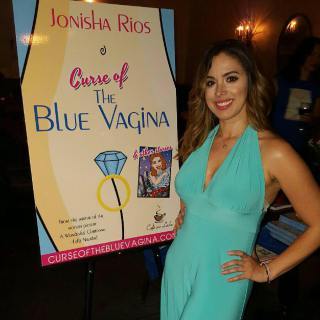 Jonisha Rios is an accomplished writer, director and actress. She currently resides in California where she teaches and cares for your 3 year-old son Iysaac- Brendon. She's here today to share her news about her latest work, Curse of the Blue Vagina,
a unique collection that includes two short stories and an all women’s monologue theatrical piece.
Jonisha Rios is an accomplished writer, director and actress. She currently resides in California where she teaches and cares for your 3 year-old son Iysaac- Brendon. She's here today to share her news about her latest work, Curse of the Blue Vagina,
a unique collection that includes two short stories and an all women’s monologue theatrical piece.
Tell us a bit about your book, Jonisha, and what inspired you to write such a story.
My book is a collection of three different stories woven into one fun book. The three pieces are distinct in that they each say something different. For example the first piece is about a girl named Cassandra who discovers she has a childhood curse. Determined to break the spell she may be under she takes us all on a fun journey to get to a place where ultimately she can find a lasting love. The second story is about a sassy coffee drinking aunt who teaches the main character, (Jonisha), that life is like a cup of Joe. Settle down and enjoy every sip life has to offer. Finally the third piece is infused with female monologues that empower, heal and hopefully make you laugh.
What type of writer are you—the one who experiences before writing, like Hemingway, or the one who mostly daydreams and fantasizes?
I definitely experience a feeling or some form of emotion before I write. This energy can be anything really -all I know is that when I feel it; it’s time to write. For me it has always been a healing experience to put pen to paper and just see what comes about as a result.
Agatha Christie got her best ideas while eating green apples in the bathtub. Steven Spielberg says he gets his best ideas while driving on the highway. When do you get your best ideas and why do you think this is?
HAHA!!! I get my best ideas when I’m on the toilet – I know it’s embarrassing but when I am in the john, or in the bathtub- magic happens. There is just something about being in the bathroom that makes me want to create. It’s like my little sacred space. It could also be that this is the only place in the house that I can get some alone time in. I live in a loft with my husband Michael and son Iysaac and we have no place within the house that we can call our own. It’s just one big open space, and then there is the bathroom. So I claimed that space as my own sanctuary. I just lock myself in there and create.
When it comes to writing, are you an early bird, or a night owl?
I am for sure a night owl. Once my kid goes to sleep I only have a few hours to myself where I can hunker down and get to work. I also like to work really early in the morning like after 3am. There is something about writing this early in the morning. I just feel really clear. Or maybe its just exhaustion.
Do you have a website/blog where readers may learn more about you and your work?
I do have a blog that I need to revisit its called the “Solo Show Expert” on blogger. I have several articles on that site with regards to how you can create your own solo-show. Currently I have my curseofthebluevagina.com site and plan to add content to it. We are also in the midst of launching either a weekly web show or pod cast. So please follow me on Twitter under Blame it on Rios or even Facebook under the group Saved by the Pole or Curse of the Blue Vagina .
Do you have another book on the works? Would you like to tell readers about your current or future projects?
I have a few actually. I have a fun new book I’m working on now—It’s a secret and it will be about another year before it’s out there. But I will give you a hint… its all about steps.
As an author, what is your greatest reward?
Completion. Seeing my work finished in the form of a completed book and knowing that there was a group of people collaborating to get it in the best possible shape is the best reward. That for me is so gratifying.
August 9, 2016
Interview: Ruth J. Anderson, Author of ‘Whistle Blower and Double Agents’
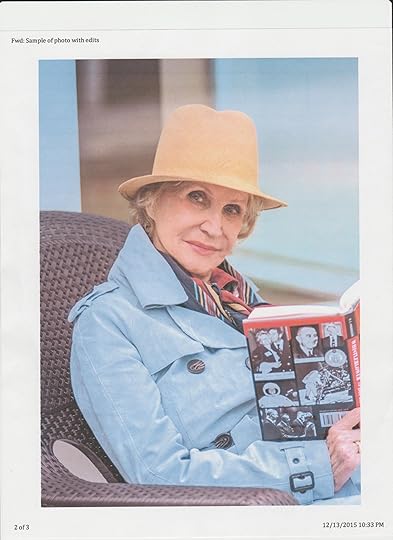 Born and raised in Washington, D.C.’s Georgetown, Ruth J. Anderson served with several Congressional and cabinet-level officials for over 25 years, including the Federal Communication Commission; Senator Richard Russell, Senate Commerce Committee, Secretary of Commerce, and Postmaster General. Upon the recommendations of Sen. Henry Jackson and Judge Roy Morgan, Ruth joined the Atomic Energy Commission and then U.S. Nuclear Regulatory Commission, as Editorial Assistant and Research Specialist. Ruth served as President of the Federally Employed, Inc., SMC, which represented over 750,000 Federal employees.
Born and raised in Washington, D.C.’s Georgetown, Ruth J. Anderson served with several Congressional and cabinet-level officials for over 25 years, including the Federal Communication Commission; Senator Richard Russell, Senate Commerce Committee, Secretary of Commerce, and Postmaster General. Upon the recommendations of Sen. Henry Jackson and Judge Roy Morgan, Ruth joined the Atomic Energy Commission and then U.S. Nuclear Regulatory Commission, as Editorial Assistant and Research Specialist. Ruth served as President of the Federally Employed, Inc., SMC, which represented over 750,000 Federal employees.She was selected for the World Who’s Who of Women in Cambridge, England and in 1977, was honored to be the first woman to receive the Silver Medal for Meritorious Service at the U.S. Nuclear Regulatory Commission. A past member of the New York Academy of Sciences and the Society of Women Engineers, Ruth also served on the Federal Women’s Interagency Board. Ruth Anderson resides in Florida. Whistle Blower and Double Agents is her first novel. Centered on what Anderson calls “a cover-up of epic proportions,” its an explosive international thriller inspired by actual events.
About the book During a visit to the CIA on a safeguards inquiry, an Atomic Energy Commission nuclear scientist finds that the safeguards program of his agency was flawed and allowed for nuclear material to be stolen from within the nuclear plant and passed on to other countries. Deeply alarmed, he reported this finding to the AEC, and later to the U.S. Congress and the President. But when the U.S. Nuclear Regulatory Commission chairman falls in love with a beautiful female undercover CIA operative, what follows is a pulse-quickening, globe-spanning page turner that will leave readers wondering where truth ends and fiction begins—if at all…
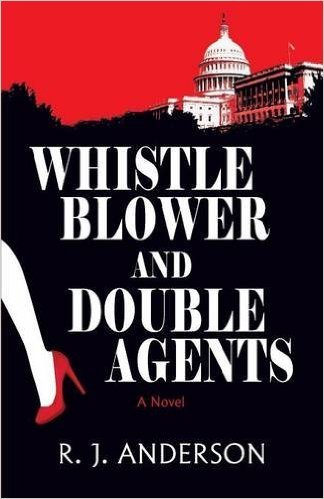 Welcome to The Dark Phantom, Ruth! Tell us, what is inside the mind of a thriller espionage writer?
Welcome to The Dark Phantom, Ruth! Tell us, what is inside the mind of a thriller espionage writer?While I can’t vouch for what is in the mind of every thriller espionage writer, I can say that I have a healthy active brain, which I inherited from my grandmother, who was a brilliant woman. My grandmother on my mother’s side loved to write and she wrote extensively. In fact, that grandmother was a relative of Charles Lamb, a great writer in England. I’ve loved to read and write my whole life, as well.
Why should readers buy Whistle Blower and Double Agents?
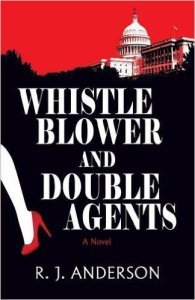
Readers have said Whistle Blower and Double Agents is exciting and a page-turner. I’ve heard from a number of people who have read the book say they have difficulty putting it down. I hope that readers in search of a good story will find that in Whistle Blower and Double Agents. One writer described it as “straight out of a James Bond movie – chock-full of intrigue, suspense, romance, and action.” That is certainly high praise.
What makes for a good thriller novel?
First, I like novels that have some basis in reality. For instance, I prefer to read thrillers written by an author who either knows his/her subject or is willing to do the research to learn about the topic he/she is writing about. Some of the best thrillers, in my opinion, are rooted in fact. Whistle Blower and Double Agentscertainly fits that bill, as the book is inspired by actual incidents around the 200 pounds of uranium missing, or unaccountable, from a US nuclear power plant.
The question of responsibility pointed in many directions – the man who operated the nuclear power plant in Pennsylvania, the CIA, and even the President. My employer, the U.S. Nuclear Regulatory Commission held hearings where a lot of lying and cover-up ensued at the expense of the brave and later maligned nuclear scientist who blew the whistle on the case. I’m often asked why I believe there was a cover-up. I interviewed the whistleblower and was haunted by the stories for years. You see, the ‘whistleblower’ found out exactly what happened to the uranium, who was involved—and who received the ‘missing’ uranium. Ultimately, I felt that this was a story that needed to be told.
Second, I love when there is a sense of authenticity and realism about the characters in a novel. I had the benefit of personally knowing the characters in Whistle Blower and Double Agents. That experience helped me bring life to these characters so that readers get that sense of reading about real people and not just characters in a book.
When do you write?
I write at night since it is quiet and no one bothers me. It’s important for me to really be able to concentrate while I’m writing. Also, in researching Whistle Blower and Double Agents, I was working with people all over the country and found that night was the easiest time to speak with contacts in other regions. I researched the book thoroughly so that the facts would be correct. That was very important to me, even though it made the writing process tedious and time-consuming.
What has writing taught you?
Writing has taught me how to research a word, observe a person, take note of colors, examine a room, to consider a person’s emotion and what is really conveyed through laughter, a smile, or sadness. In other words, writing has reinforced just how important it is to be observant, to listen and to pay attention.
Writing has also reinforced my belief that if you want to succeed, you have to work hard. The process of writing Whistle Blower and Double Agents was a lengthy one: I started writing the book in the 1970s and would return to it every once in a while over the years. I started writing regularly again around 2001 and finished the book in late 2015. Even though it was a process that spanned decades, I’m so proud of the book and the hard work I put in to it.
Photo and cover art published with permission from the author.

August 2, 2016
On the Spotlight: WRITE TO DIE, a legal thriller by Charles Rosenberg
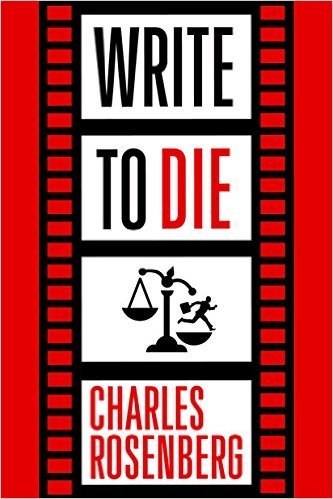
WRITE TO DIE, Charles Rosenberg’s blockbuster legal thriller is set against the backdrop of Hollywood’s entertainment industry, and marks the debut of a new series. Write to Die introduces protagonist Rory Calburton, a former Deputy DA turned entertainment lawyer who is swept up in the trial of a lifetime when murder hits the heart of the movie business.
A sensational tale informed by Charles Rosenberg’s decades-long legal career, Write to Die sizzles. With its seemingly ripped-from-the-headlines storyline, exhilarating plot, and pulse-pounding action, Write to Die heralds the advent of an outstanding new mystery series. Resplendent with realistic courtroom drama, richly drawn characters that spring to life within the novel’s pages, and an insider’s view of the inner workings of Hollywood, Write to Die is to die for.
About Write to Die
Hollywood’s latest blockbuster is all set to premiere—until a faded superstar claims the script was stolen from her. To defend the studio, in steps the Harold Firm, one of Los Angeles’s top entertainment litigation firms and as much a part of the glamorous scene as the studios themselves. As a newly minted partner, it’s Rory Calburton’s case, and his career, to win or lose. But the seemingly tame civil trial turns lethal when Rory stumbles upon the strangled body of his client’s general counsel. And the ties that bind in Hollywood constrict even tighter when the founder of the Harold Firm is implicated in the murder. Rory is certain the plagiarism and murder cases are somehow connected, and with the help of new associate Sarah Gold—who’s just finished clerking for the chief justice—he’s determined to get answers. Will finding out who really wrote the script lead them to the mastermind of the real-life murder?
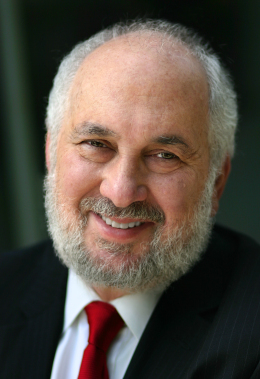
About Charles Rosenberg
Charles (“Chuck”) Rosenberg is a Harvard Law School-trained lawyer who has been a partner in a large, international law firm and, simultaneously, an adjunct law professor who has taught numerous law school courses, from copyright to criminal procedure. He received his undergraduate degree from Antioch College and has served as the credited legal script consultant to TV’s The Paper Chase, L.A Law, The Practice and Boston Legal, a full-time on-air legal analyst for E! Television’s O. J. Simpson criminal and civil trial coverage, and a former board member of the Taos Film Festival. He is author of the bestselling Robert Tarza legal-thriller trilogy: Death on a High Floor, Long Knives and Paris Ransom, and The Trial of O.J.: How to Watch the Trial and Understand What’s Really Going On, a trial watcher’s guide to the O.J. Simpson trial. Chuck practices law in the Los Angeles area, where he lives with his wife. He is currently at work on the second book in the To Die series. Visit www.charlesrosenbergauthor.com for more information.
Publication Date: July 26, 2016
Category: Mystery/Thriller
Formats: Trade Paper, ISBN: 978- 1503937611, $15.95, Kindle, $3.99
Page Count: 498 (approximately)
Publisher: Thomas & Mercer
Publicity Contact: Maryglenn McCombs (615) 297-9875 maryglenn@maryglenn.com
July 22, 2016
Meet Joan Schweighardt, author of ‘The Last Wife of Attila the Hun’
 Joan Schweighardt is the author of several novels. In addition to her own projects, she writes, ghostwrites and edits for private and corporate clients.
Joan Schweighardt is the author of several novels. In addition to her own projects, she writes, ghostwrites and edits for private and corporate clients.Q: Congratulations on the third release of your latest book, The Last Wife of Attila the Hun. To begin with, can you gives us a brief summary of what the story is about and what compelled you to write it?
A: The book is about a Burgundian noblewoman in 450 a.d. who goes to the City of Attila to give Attila what she believes to be a cursed sword. There are two threads throughout the book, one describing what happens to her in the City of Attila and one illuminating the reasons she went there in the first place.
Q: What do you think makes a good historical novel? Could you narrow it down to the three most important elements? Is it even possible to narrow it down?
A: The Last Wife of Attila the Hun is based on both history and legend, and I think this is probably true of many so called historical novels. The most important element for me, for this particular book, was blending the historical and legendary materials together so that they would feel seamless. The history of Attila contains a catalogue battles, of instances of greed, ego, and extraordinary acts of violence. On the other hand, the legends talk about magic swords and even dragons. So I had to mix these elements in such a way that the reader wouldn’t feel jerked around from one utterly realistic setting to one bordering on fantasy.
With other historical fiction that I’ve worked on, where there were no legends involved, the challenge was to mix historical fact with fictional characters. After you’ve spent hours and hours researching, I think there is a tendency to want to pour all the factual stuff you’ve learned into the novel. My first draft is always too heavy on the historical end, almost like a text book. So when I do second and third and fourth drafts, I try to keep deleting unnecessary details while I simultaneously work on enhancing character and plot.
 Q: How did you go about plotting your story? Or did you discover it as you worked on the book?
Q: How did you go about plotting your story? Or did you discover it as you worked on the book?A The main plot points were there for the taking, in the legendary and historical materials. But it was still no piece of cake. I had to fill in lots of gaps, build lots of bridges. Also, when I wrote the first draft it was in chronological order, which meant that the legendary stuff was for the most part in the first half of the book and the historical stuff was in the second. That didn’t work at all. I had to find a way to weave the legendary and historical materials together, and that took several more drafts.
Q: Tell us something interesting about your protagonist and how you developed him or her. Did you do any character interviews or sketches prior to the actual writing?
A: I got my protagonist from the legendary material, not the historical. Very little is known about the “personality” of the last wife of Attila. We only know that at some point near the end of his life Attila married a Germanic woman. I identified this Germanic woman as the Gudrun from the legends. The legends provided elements for the motivation and the plot I would develop to get Gudrun from A to B to C, but they still fell short when it came to her personality, who she was as a woman. That just kind of developed over time as I worked on each draft and began to be able to really imagine her. The story is written in first person, which helps a lot with character development issues. It forces your character to reveal herself.
Q: In the same light, how did you create your antagonist or villain? What steps did you take to make him or her realistic?
A: The history books I researched had all kinds of interesting information about Attila. The Huns and Germanic people didn’t write back then, so most of the stories about Attila came from Roman historians. But, as ruler of half the known world and a man who felt his calling was to take over the other half too, Attila was a hot topic among Roman historians, and I got some really juicy tidbits about his behavior, his relationships with his sons, his relationships with his various wives, his beliefs, his superstitions and of course his battles. It was a real revelation. I knew virtually nothing about him before.
Q: How did you keep your narrative exciting throughout the novel? Could you offer some practical, specific tips?
A: Unlike other novels, where I’ve had to really focus on plot, here I had to focus on what I should leave out of the plot so that the story would not become “congested.” But in general, I try to end chapters with developments that seem surprising or ironic. I say to myself, What’s the least likely thing I would expect to happen here? And then I try to make it happen.
Q: Setting is also quite important and in many cases it becomes like a character itself. What tools of the trade did you use in your writing to bring the setting to life?
A: There are descriptions of the great City of Attila in history books, so I was able to draw on that. The other main setting in the book is a rather dilapidated “castle” in a rural area of Europe in 450 a.d. I did research to figure out what life would be like in such a place, how people would bathe, how they would eat, what the inside of their dwellings would look like, etc.
Q: Did you know the theme(s) of your novel from the start or is this something you discovered after completing the first draft? Is this theme(s) recurrent in your other work?
A: I knew what themes were of interest to me when I started, but the great thing about fiction is that when you get done you see that there are other themes that worked their way in, things you didn’t really intend. The writer Susan Sontag once said she wrote to find out what she was thinking. I think this is what she was talking about.
Q: Where does craft end and art begin? Do you think editing can destroy the initial creative thrust of an author?
A: If I never edited my work it would all be garbage. I can’t speak for other writers, but for me craft is essential. I have a few friends who are not only wonderful writers but also very honest in their critiques. I ask them to read early drafts of my work. When you get caught up in the day to day of writing a novel, you can take a wrong turn or get sidetracked by a really boring subplot and not realize it. My three favorite fellow writers are all really different in their approach to writing. So once they each give me feedback, I feel I have the best possible picture of the weaknesses in my work and I can go back to the drawing board assured that the next draft will be better.
Q: What three things, in your opinion, make a successful novelist?
A: I am always surprised by the number of writers who don’t want to go back and polish. Maybe some are geniuses and they don’t have to. But most writers will find that it is impossible to write a really good book without going back over it a number of times. During the first draft you may want to concern yourself mostly with plot. The next draft you may want to work more on character development. The next one you may want to just go through and make sure your characters’ motivations are clear and setting descriptions are solid. Sometimes in my work I make assumptions about motivation; I think because I know why a character is doing something other people will know too. This is one of those areas where the help of other writers/readers has been invaluable to me. So, the three things I believe most writers need to be successful are: draft one, draft two, draft three (and drafts four and five can’t hurt either).
Q: A famous writer once wrote that being an author is like having to do homework for the rest of your life. What do you think about that?
A: Most people would agree that “homework” connotes a task that is given to you by someone other than yourself for the purpose of ascertaining that you’ve learned certain lessons. Writing a book, on the other hand, is a task you’ve generated for yourself, for the purpose of telling a story that is important to you for one reason or another. So no, I don’t think the comparison is apt.
Q: Are there any resources, books, workshops or sites about craft that you’ve found helpful during your writing career?
A: Again, what I’ve found most helpful is insights from fellow writers. These days there are all kind of websites that provide help to writers too. Savvy Authors is one of my favorites, but there are plenty of others. There’s no shortage of ideas out there about how to do anything, whether it’s writing a book or changing out a toilet.
Q: Is there anything else you’d like to share with my readers about the craft of writing?
A: A lot of young writers who start out writing short stories with the hope that they will write longer works in the future get bogged down by the idea of taking on a huge project. I would like to say to them, Why not try your hand at writing a novel based on history or legend? Maybe you have a time period that interests you, and you can develop it and then tell a story on top of it, so to speak. Or maybe there is a historical character that you’d like to develop a setting around. Or maybe there is a myth or legend that you’d like to bring into modern times. Jane Smiley took the story of King Lear, which is of course best known as a Shakespearian play, and made it her own in her novel A Thousand Acres. What’s really interesting to me is that Shakespeare borrowed his King Lear from a Celtic legend, and the legend likely had some foundation in history.
July 16, 2016
5 Questions with Lynn Steward, Author of 'What Might Have Been'
Lynn Steward , a veteran of the New York fashion industry and a buyer on the team that started the women’s department at Brooks Brothers, created the Dana McGarry series, set at a transformational time in the 1970s world of fashion and in the lives of multigenerational women. What Might Have Been is the second volume in the series. A Very Good Life, Steward’s debut novel, was published in March 2014.
Q:
What’s inside the mind of a literary fiction author?
A:
The characters’ inner narrative: their personal struggles and journeys, as they
grow, learn, and conquer.
Q:
Tell us why readers should buy What Might
Have Been.
A: Dana McGarry’s quest for identity will touch
your heart. You will empathize with her challenges and be inspired by her
tenacity. As a fashion buyer at one of New York’s
most glamorous department stores, Dana McGarry is a tastemaker, her keen
instinct for fashion trends and innovative ideas coupled with a razor sharp
business sense. But like the elegant and conservative store that employs her,
Dana is caught between two eras—between being liked and standing her ground,
between playing by the rules and being a maverick. Dana is sensitive and
beautiful, but what you see is not what you get. Behind
the cool and attractive facade, Dana is both driven by her need to
control yet impeded by her expectation of perfectionism. As she competes to replace women at the top of their
game, she is challenged by jealous colleagues. And when a wealthy love interest
wants to open doors and support her ambition, she embraces Coco Chanel’s
mantra of “never wanting to weigh more heavily on a man than a bird.” As the
women’s movement paves the way, Dana finds a path to the career she wants at
the expense of happiness that was not meant to be. Readers will discover that What Might Have Been is a story with life-lessons that
transcends any period.
Q:
What makes a good literary fiction?
A:
Likeable, lingering characters.
Q:
What is a regular writing day like for you?
A:
My favourite time to write is early in the morning, around 5:30 a.m., when my
mind is clear, it is peaceful and there are no interruptions. I don’t let
anything distract me for at least three hours, and I am always surprised and
disappointed how fast the time passes. I also can spend thirty hours at my desk
during a quiet weekend, researching, outlining and writing. I never spend
enough time with my story.
Q:
What do you find most rewarding about being an author?
A:
The process: outlining plots, developing characters, researching historical
events, and most of all, the quiet time required to weave and write the story.
ABOUT THE BOOK
Name: Lynn Steward
Book Title: What Might Have Been
Genre: Literary Fiction
Publisher: Lynn Steward Publishing
As a fashion buyer at one of New York’s most glamorous department stores, Dana McGarry is a tastemaker, her keen instinct for fashion trends and innovative ideas coupled with a razor sharp business sense. But like the elegant and conservative store that employs her, Dana is caught between two eras—between being liked and standing her ground, between playing by the rules and being a maverick. Dana is sensitive and beautiful, but what you see is not what you get.Behind the cool and attractive facade, Dana is both driven by her need to control yet impeded by her expectation of perfectionism. As she competes to replace women at the top of their game, she is challenged by jealous colleagues. And when a wealthy love interest wants to open doors and support her ambition, she embraces Coco Chanel’s mantra of “never wanting to weigh more heavily on a man than a bird.” As the women’s movement paves the way, Dana finds a path to the career she wants at the expense of happiness that was not meant to be.
Steward captures the nuances of 70s life in New York City and provides the perfect backdrop for an independent woman determined to make her mark. What Might Have Been is a story that transcends any period.
July 8, 2016
Book Review: ‘Luck Is Just the Beginning’ by Celeste Leon

 Based on a true story, Celeste Leon’s beautifully written debut novel is the story of a young man in 1940s Puerto Rico who wins the lottery, only to realize that, as the title states, luck is just the beginning.
Based on a true story, Celeste Leon’s beautifully written debut novel is the story of a young man in 1940s Puerto Rico who wins the lottery, only to realize that, as the title states, luck is just the beginning.Young Ramon is able to see visions, a gift he inherited from his mother. When he sees a number flash across the sky, he decides to buy a complete lottery ticket. At first, he’s thrilled to have won a fortune, for his plan is to go to college, become a dentist, and make the world a better place by helping the people of his village. But, as it turns out, money changes a lot of things—people’s intentions, expectations, desires—even one self’s, and not always for the better. Now, people approach Ramon because they want something from him, and he starts to doubt everyone, even the girl who claims to love him. Likewise, he starts doing things he later regrets.
This is the era of WWII, and in the midst of it all Ramon tries to face the challenges that threaten to destroy his life, especially a man whose envy has made Ramon his target for revenge. Overnight, all facets of Ramon’s life turn upside down—his dwindling family business, his relationship with Elsie, his dream to go to college in the States. At some point, even the police are after him.
The novel is rich with Puerto Rican flavor and historical details, and Leon writes with simplicity yet profound perception about human nature. Ramon is an endearing, utterly likable character—an honest, good-hearted man who makes mistakes yet rises above them.
Luck is Just the Beginning was honored with a Mariposa award for Best First Book in the 2016 International Latino Book Awards, and was also a finalist in the “Fiction: Multicultural” category of the 2016 International Book Awards.
Read my Blogcritics interview with the author.
Find out more about the book on Amazon or from the author's website.
This review was originally published in Blogcritics Magazine.

